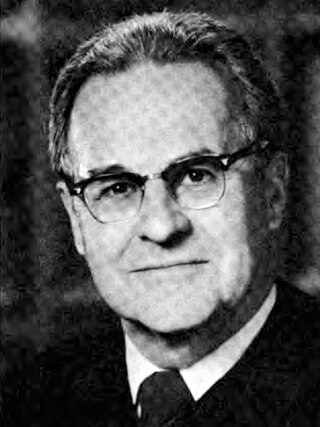
The Supreme Court of California is the highest and final court of appeals in the courts of the U.S. state of California. It is headquartered in San Francisco at the Earl Warren Building, but it regularly holds sessions in Los Angeles and Sacramento. Its decisions are binding on all other California state courts. Since 1850, the court has issued many influential decisions in a variety of areas including torts, property, civil and constitutional rights, and criminal law.

Rose Elizabeth Bird was the 25th Chief Justice of the California Supreme Court. She was the first female law clerk of the Nevada Supreme Court, the first female deputy public defender in Santa Clara County, the first woman to serve in the California State Cabinet, and the first female Chief Justice of California.

Roger John Traynor was the 23rd Chief Justice of California (1964–1970) and an associate justice of the Supreme Court of California from 1940 to 1964. Previously, he had served as a Deputy Attorney General of California under Earl Warren, and an Acting Dean and Professor of UC Berkeley School of Law. He is widely considered to be one of the most creative and influential judges and legal scholars of his time.

Morey Stanley Mosk was an American jurist, politician, and attorney. He served as Associate Justice of the California Supreme Court for 37 years (1964–2001), the longest tenure in that court's history.
The People of the State of California v. Robert Page Anderson, 493 P.2d 880, 6 Cal. 3d 628, was a landmark case in the state of California that outlawed capital punishment for nine months until the enactment of a constitutional amendment reinstating it, Proposition 17.
Tarasoff v. Regents of the University of California, 17 Cal. 3d 425, 551 P.2d 334, 131 Cal. Rptr. 14, was a case in which the Supreme Court of California held that mental health professionals have a duty to protect individuals who are being threatened with bodily harm by a patient. The original 1974 decision mandated warning the threatened individual, but a 1976 rehearing of the case by the California Supreme Court called for a "duty to protect" the intended victim. The professional may discharge the duty in several ways, including notifying police, warning the intended victim, and/or taking other reasonable steps to protect the threatened individual.

Donald Richard Wright was the 24th Chief Justice of California.

Mathew Oscar Tobriner was an American lawyer and law professor who served as an associate justice of the California Supreme Court from 1962 to 1982.
Cruz Reynoso was an American civil rights lawyer and jurist.

Carol Ann Corrigan is an associate justice of the California Supreme Court. She is a former prosecutor.

Ming William Chin is an American attorney and former Associate Justice of the Supreme Court of California, serving from March 1, 1996 to August 31, 2020.

Superior courts in California are the state trial courts with general jurisdiction to hear and decide any civil or criminal action which is not specially designated to be heard in some other court or before a governmental agency. As mandated by the California Constitution, there is a superior court in each of the 58 counties in California. The superior courts also have appellate divisions which hear appeals from decisions in cases previously heard by inferior courts.
People v. Berry is a voluntary manslaughter case that is widely taught in American law schools for the appellate court's unusual interpretation of heat of passion doctrine. Although the defendant had time to "cool down" between his wife's verbal admission of infidelity and the killing, the California Supreme Court held that the provocation in this case was adequate to reduce a murder charge to manslaughter. The lower court had relied on the traditional definition of "adequate provocation" in its jury instructions. The California Supreme Court reversed Berry's murder conviction, while affirming Berry's conviction for assault using deadly force.

The California Public Records Act was a law passed by the California State Legislature and signed by governor Ronald Reagan in 1968 requiring inspection or disclosure of governmental records to the public upon request, unless exempted by law.

Frank Kellogg Richardson was an American attorney and Associate Justice of the California Supreme Court.

Marshall Francis McComb was an American jurist who served as an associate justice of the Supreme Court of California from January 1956 to May 2, 1977.
The Judiciary of California or the Judicial Branch of California is defined under the California Constitution as holding the judicial power of the state of California which is vested in the Supreme Court, the Courts of Appeal and the Superior Courts. The judiciary has a hierarchical structure with the California Supreme Court at the top, California Courts of Appeal as the primary appellate courts, and the California Superior Courts as the primary trial courts.

Louis Harry Burke was an American lawyer who served as Associate Justice of the Supreme Court of California from November 20, 1964, to November 30, 1974.

Raymond Lawrence Sullivan was an associate justice of the Supreme Court of California from December 20, 1966, to January 19, 1977.
Raymond Elmer Peters was an Associate Justice of the Supreme Court of California from March 26, 1959 to January 2, 1973.












